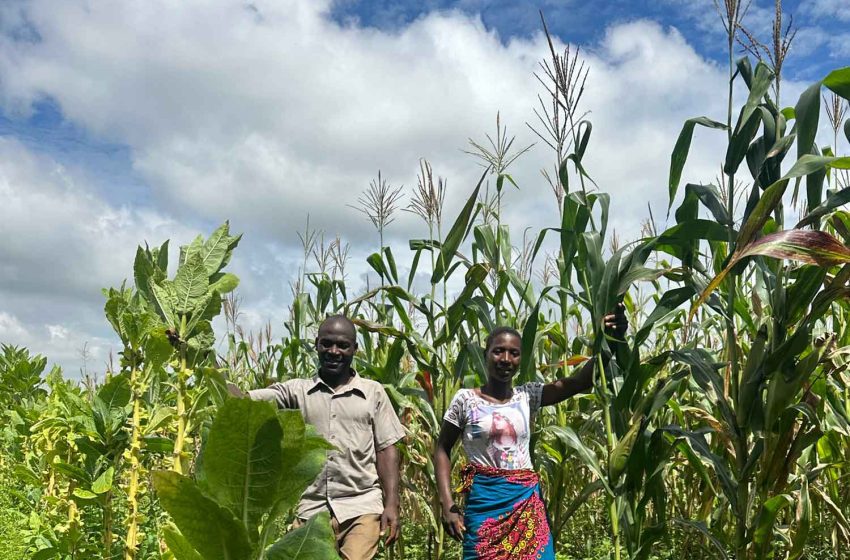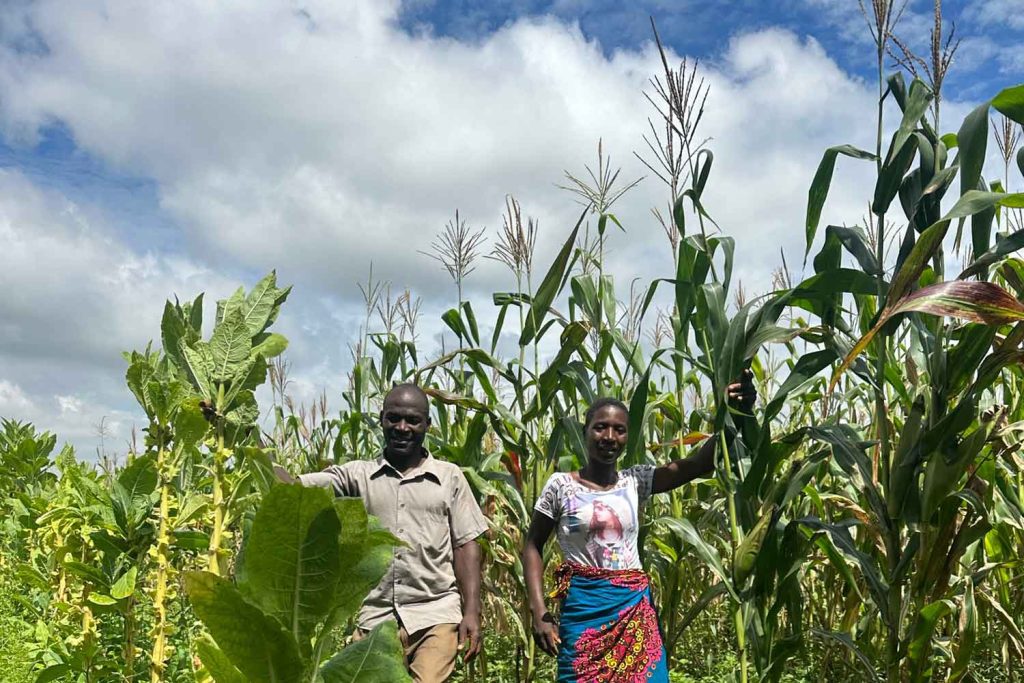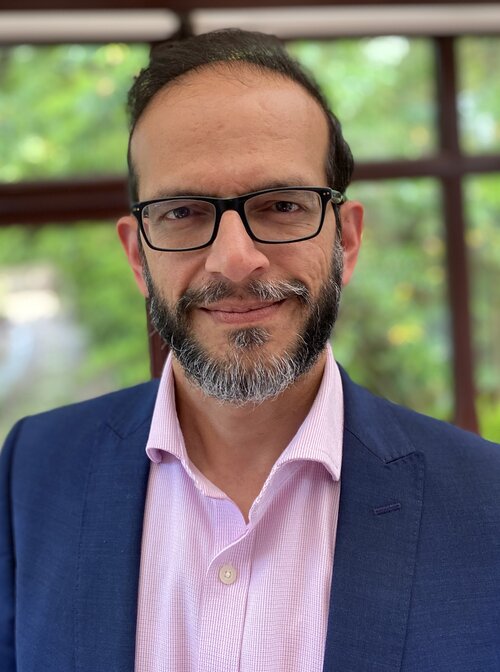From Plantations to Nicotine ’Plants’
- Also in TR Nicotine Print Edition Sudhanshu Patwardhan Sustainability
- July 1, 2023
- 0
- 9 minutes read


Synthetic nicotine could help promote global food security.
By Sudhanshu Patwardhan
The tobacco industry is undergoing rapid transformation. Companies are increasingly offering safer nicotine alternatives to current consumers of risky forms of tobacco. Is it time for them to reassess their supply chains to procure nicotine from nonagricultural sources and in the process free up land for growing crops that can feed the world’s 8 billion people? A study of the economics of tobacco cultivation and nicotine consumption may give us practical answers.
Millions of hectares of rich, fertile land are used for growing tobacco to meet the nicotine needs of over 1.1 billion tobacco users globally. Except for Swedish-style snus and tobacco used in novel heated-tobacco products, most of the tobacco grown eventually harms public health due to the toxicants arising out of its curing and manufacturing (e.g., tobacco-specific nitrosamines, added chemicals in smokeless tobacco products) and use (e.g., harmful smoke components). On May 31, the World Health Organization marks World No Tobacco Day (WNTD) with an interesting theme: “We need food, not tobacco.”
Last year, for the first time ever, two U.N. bodies—the WHO and the U.N. Environment Programme)—published a list of the environmental harms from tobacco-related farming, manufacturing, supply chain and consumption. Tobacco-related harms to the environment start from the seed and go well beyond the cigarette and bidi smoke. The WHO notes that globally, an additional 200,000 hectares of land is cleared annually for growing tobacco and curing tobacco leaves that are used in making smoked and smokeless tobacco products. Rich and diverse natural habitats, including pristine rainforests, are being lost to meet the global tobacco demand. It is estimated that 3.7 liters of water are used to make one cigarette. Worldwide, trillions of cigarettes are sold and burned annually. The environmental pollution is not limited to the emitted smoke and the ash but also the cigarette butt litter that refuses to decompose for years. In South Asian countries, spitting smokeless tobacco imposes an additional burden on health and leaves unsightly marks in buildings and roads. Even the pharmaceutical grade nicotine used in medically licensed nicotine-replacement products and e-liquids for vaping products is obtained predominantly from tobacco plants.
Any slogan that simply calls for more food instead of tobacco oversimplifies the economics of tobacco.
This year’s WNTD theme intends to put a spotlight on the arable land locked in tobacco plantations that could instead provide food security to the world’s 8 billion people. Indeed, hunger and lack of nutritious food kill millions of people worldwide every year. Feeding the ever-growing world population without denuding forest land remains a big challenge for reasons ranging from environment and climate change to biodiversity. Therefore, in a world with finite arable land, repurposing tobacco farms for growing food are an obvious target for policymakers, environmentalists and economists.
Sadly, the WNTD theme creates a false dichotomy, unnecessarily pitting tobacco farmers against a hungry world. Alas, one cannot simply switch tobacco farms and farmers to grow alternative food crops with a snap of a finger. Global demand for tobacco continues relatively unabated, thus keeping suppliers invested in a profitable crop. It is also important to remember that tobacco is an unusually hardy plant. Not all food crops can withstand conditions that the tobacco plant can endure. Unlike edible vegetables and fruits, the produce from tobacco plantations is a leaf that is included as a raw material for further processing into a product, thus not subjecting the farmers to the whims and shameful wastage due to strict size and shape requirements of western supermarket buyers. The tobacco leaf markets are utility focused and well supported through longstanding relationships among stakeholders across a sophisticated global supply chain and have lifted millions out of poverty. Any slogan that simply calls for more food instead of tobacco oversimplifies the economics of tobacco.
The health harms from risky forms of smoked and smokeless tobacco products such as cigarettes, cigars, bidis, hookah, gutkha, khaini, mishri, zarda, etc. are already well known. That knowledge has not made these products or their use obsolete—even today, over a billion people around the world consume these risky products, and more than half of them die prematurely as a result. Nicotine is addictive but is not the cause of tobacco-related cancers, cardiovascular disease and lung disease.
Many doctors harbor misperceptions about nicotine, wrongly believing that nicotine in the tobacco products causes cancer.
The invention of nicotine-replacement therapy (NRT) products over three decades ago, in the form of nicotine gums, skin patches, lozenges and mouth sprays, was crucial in realizing nicotine’s role as a medicine in helping quit tobacco and finding these products a place on the WHO’s model essential medicines list. NRT enables smokers and smokeless tobacco users to better manage their cravings and withdrawal symptoms. Still, quitting tobacco and preventing relapse remains a big challenge globally for a variety of interlinked reasons: (i) Pharmaceutical investment and innovation in improved tobacco cessation tools and products has been lacking in recent years, (ii) universal access to affordable and appealing nicotine-replacement products remains poor, and (iii) healthcare professionals around the world are not adequately trained on how to advise their patients to use nicotine-replacement products.
In fact, many of the doctors themselves harbor misperceptions about nicotine, wrongly believing that nicotine in the tobacco products causes cancer. This limits doctors’ ability to confidently support their patients’ tobacco de-addiction journey using nicotine-replacement principles. The obvious question then is: How do we ensure that current users of tobacco get all the help they can from their healthcare advisers and governments to make quitting tools accessible, affordable, appealing and available? If done at a global level, quitting success will further inspire confidence among consumers, healthcare practitioners and policymakers to accelerate the decline of the demand for tobacco.
The WHO Framework Convention on Tobacco Control (FCTC) is often elegantly simplified as a treaty for demand reduction, supply reduction and harm reduction strategies. The largest demand arises from the billion-plus cohort of current users of risky tobacco products—and that’s where affordable cessation support and safer nicotine alternatives offer the highest likelihood of practical harm reduction. So, for the agricultural transformation much needed to free up arable land, a global reduction in demand for tobacco will be a key economic driver over time for farmers to actively seek other viable alternatives. It would then be crucial to provide government support and subsidy over a phased reduction in tobacco farming.
The FCTC dedicates two entire articles in the original treaty text to alternative livelihoods for those in the supply chain and addressing environmental impact—Articles 17 and 18. Particularly in implementing those two articles, little progress has been made in the past 20 years since the treaty came into force. That is because even lesser success has been achieved on a ground-level implementation of the FCTC’s Article 14 that calls for tobacco dependence treatment provision at a national level.
In recent years, many advances in chemistry and chemical engineering have resulted in new processes and patents issued for synthesizing nicotine from nontobacco raw materials. If the correct isomer of nicotine—the S-isomer—can be manufactured at scale using these processes, that can be revolutionary and indeed game changing. Using such synthetically manufactured nicotine, nicotine-replacement products that are innovative, suitably regulated and where necessary medically licensed can thus be introduced globally for tobacco cessation at low cost and in product formats appealing to current adult smokers and smokeless tobacco users. Agricultural transformation and enhanced food security will naturally follow this purely on economics principles.
In his early years in tobacco harm reduction, his team of clinical researchers and lab scientists set the foundations for the assessment of reduced-risk products, now accepted by regulators and the industry as the definitive approach for duty of care and regulatory compliance. At Nicoventures, a wholly owned subsidiary of British American Tobacco, he was instrumental in enabling the first e-cigarette company acquisition by a global tobacco business. In his policy role there, Patwardhan shaped the creation of a global key opinion leader network in consumer advocacy and public health champions. .
With the British Standards Institution, Patwardhan led the creation of the world’s first vaping products’ standards for safety and quality in 2015 and the BSI Online Age Checking specifications in collaboration with the Westminster-based Digital Policy Alliance in 2018. .
In 2018, he co-founded the Centre for Health Research and Education that now has a team of over 40 medical and public health experts globally working in cancer prevention. Patwardhan splits time between the U.K. and South Asia on tobacco harm reduction projects that address the needs of the most disadvantaged tobacco users.

